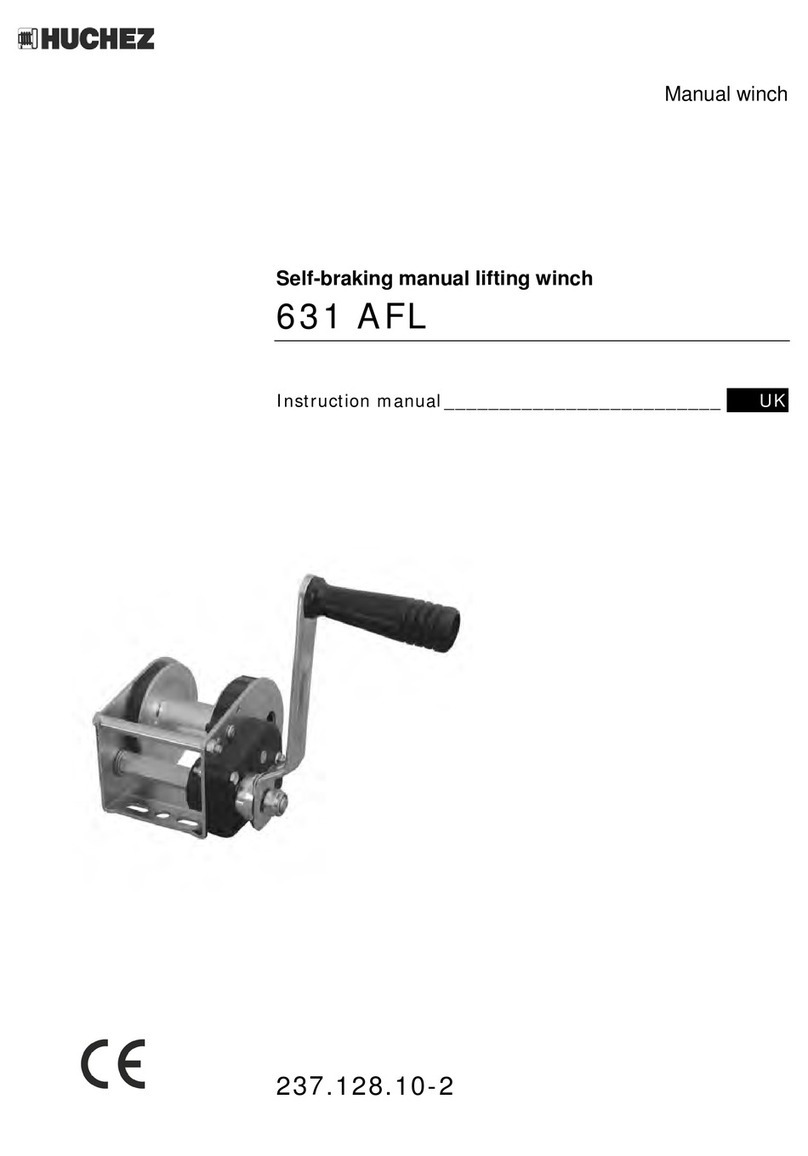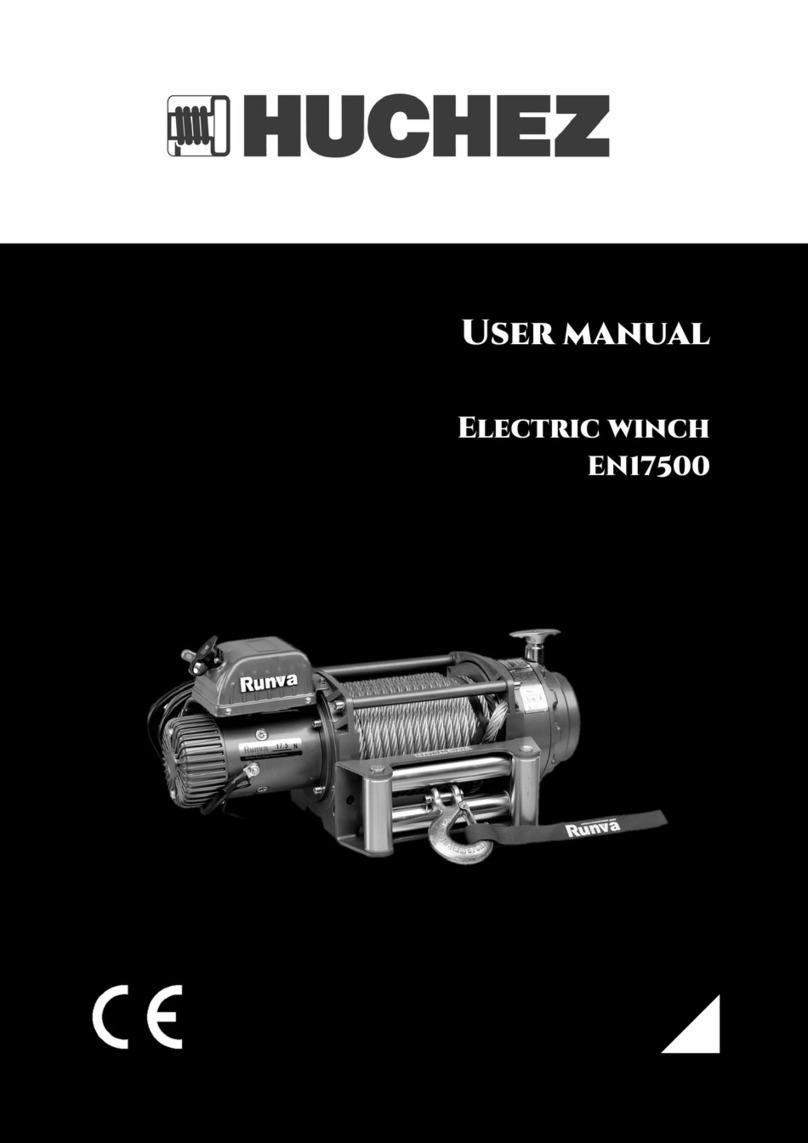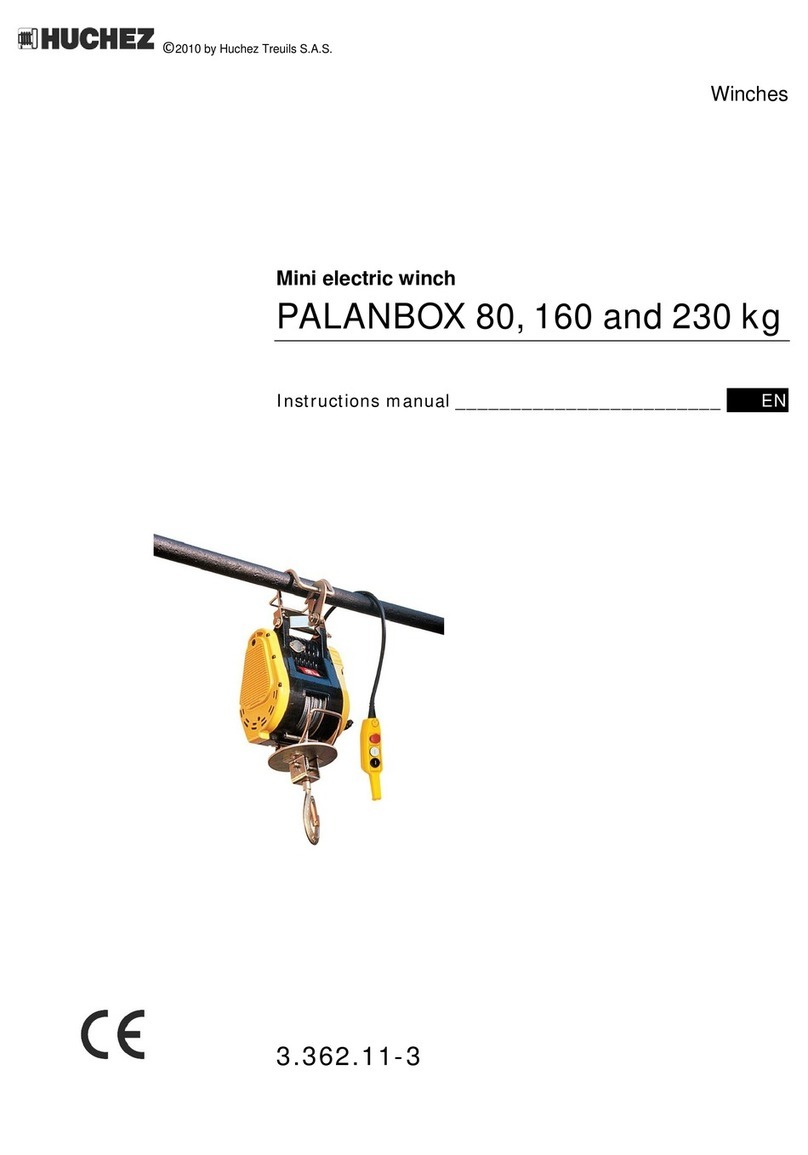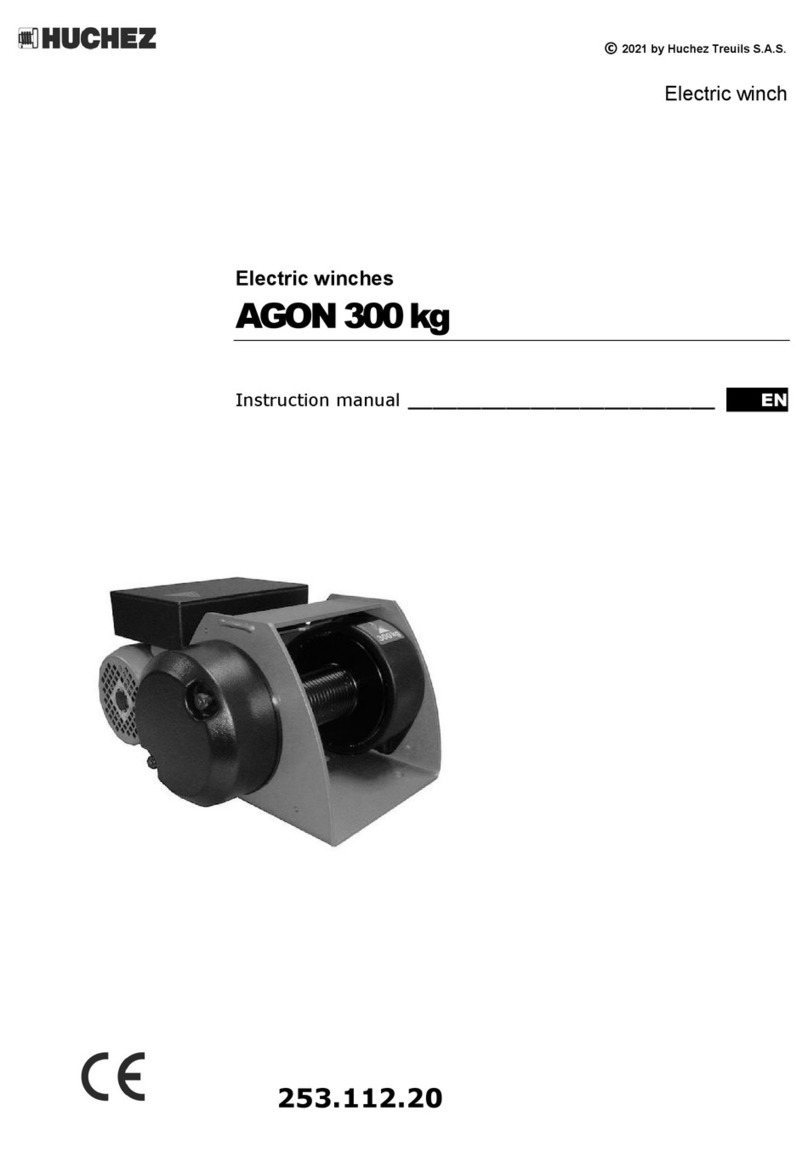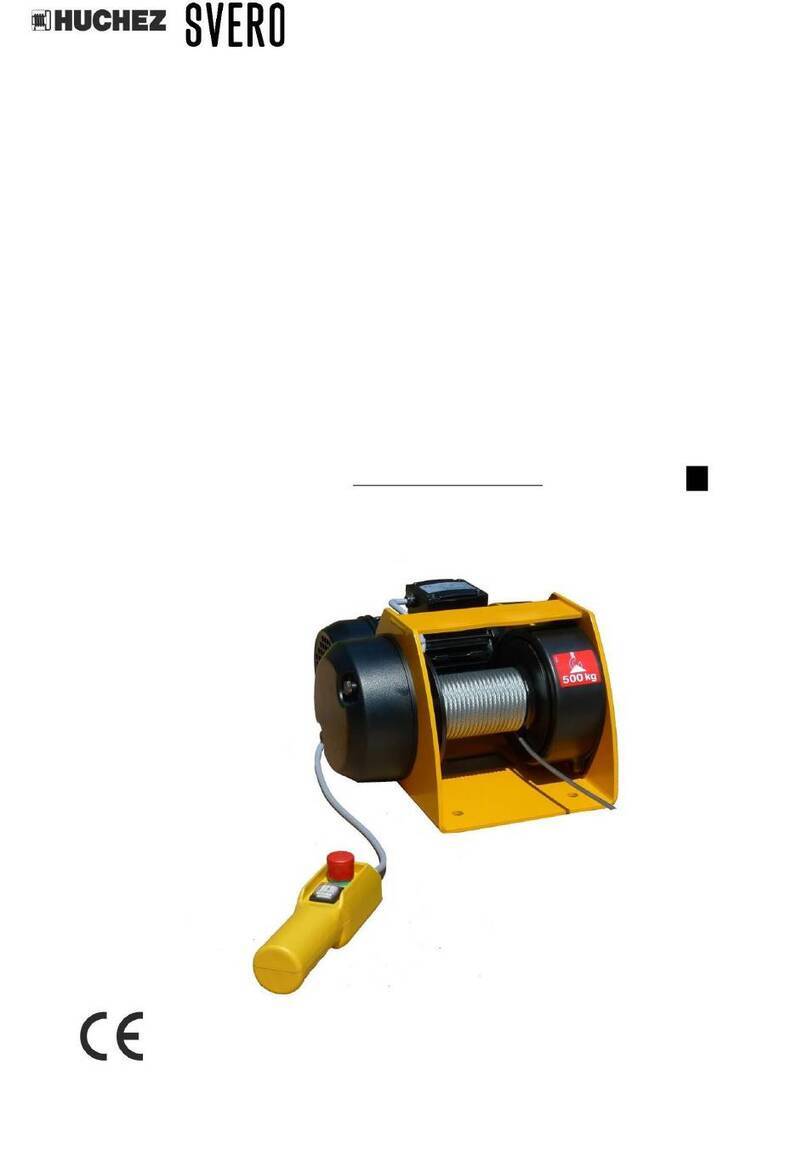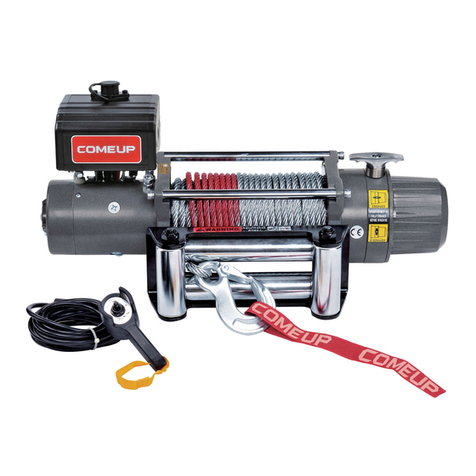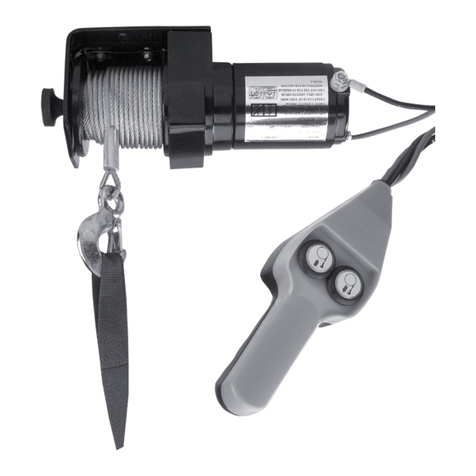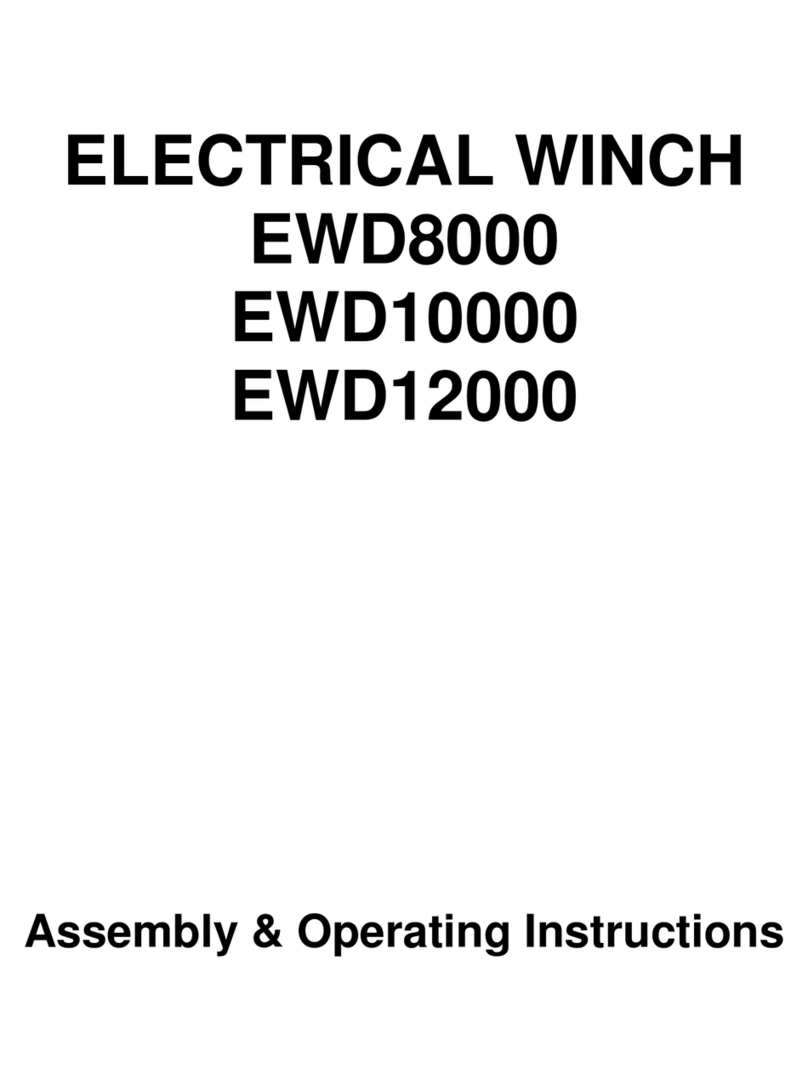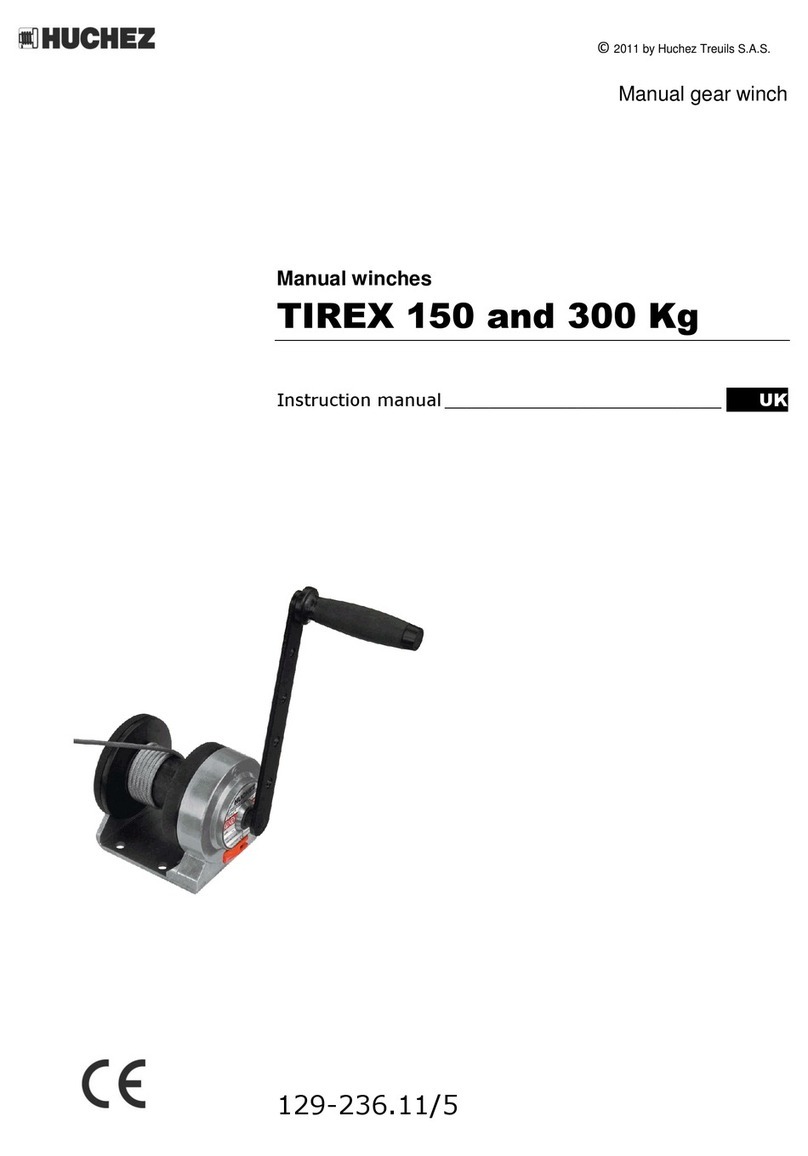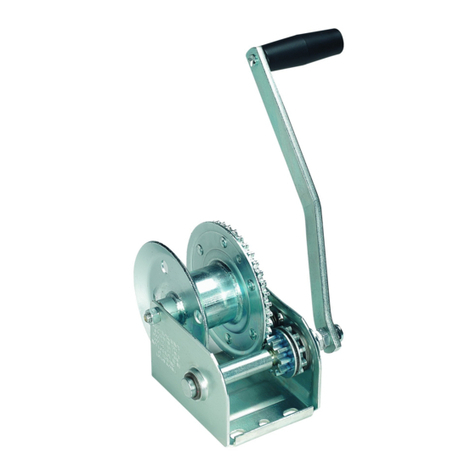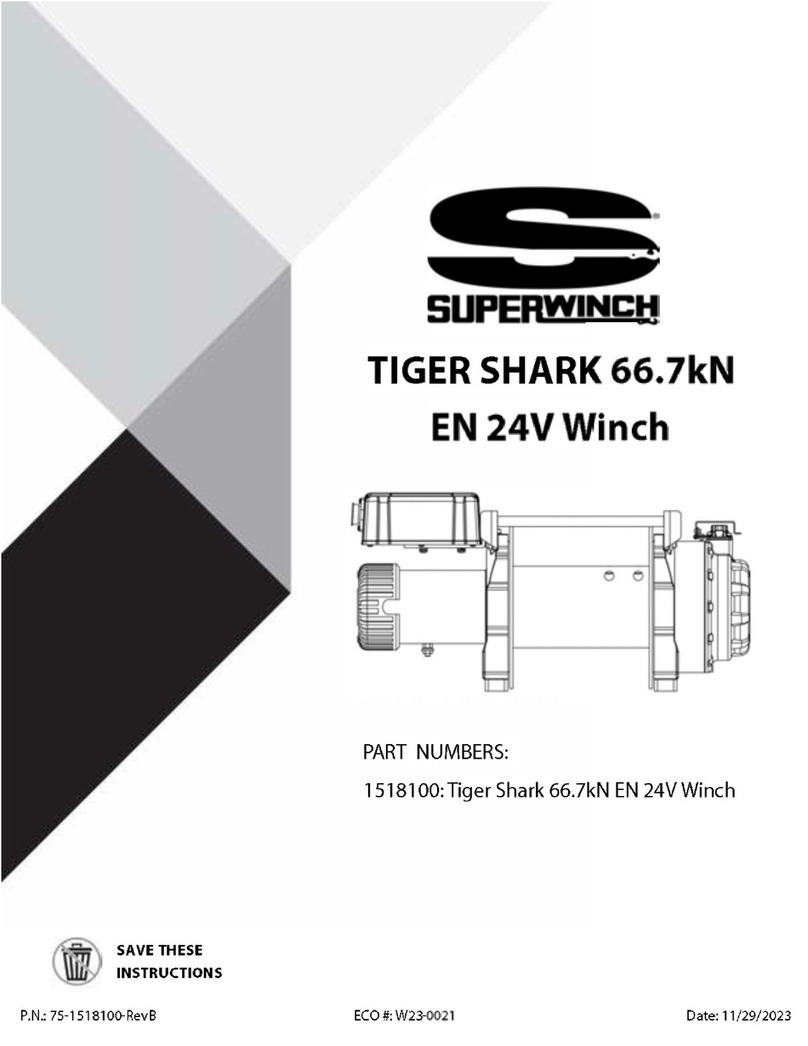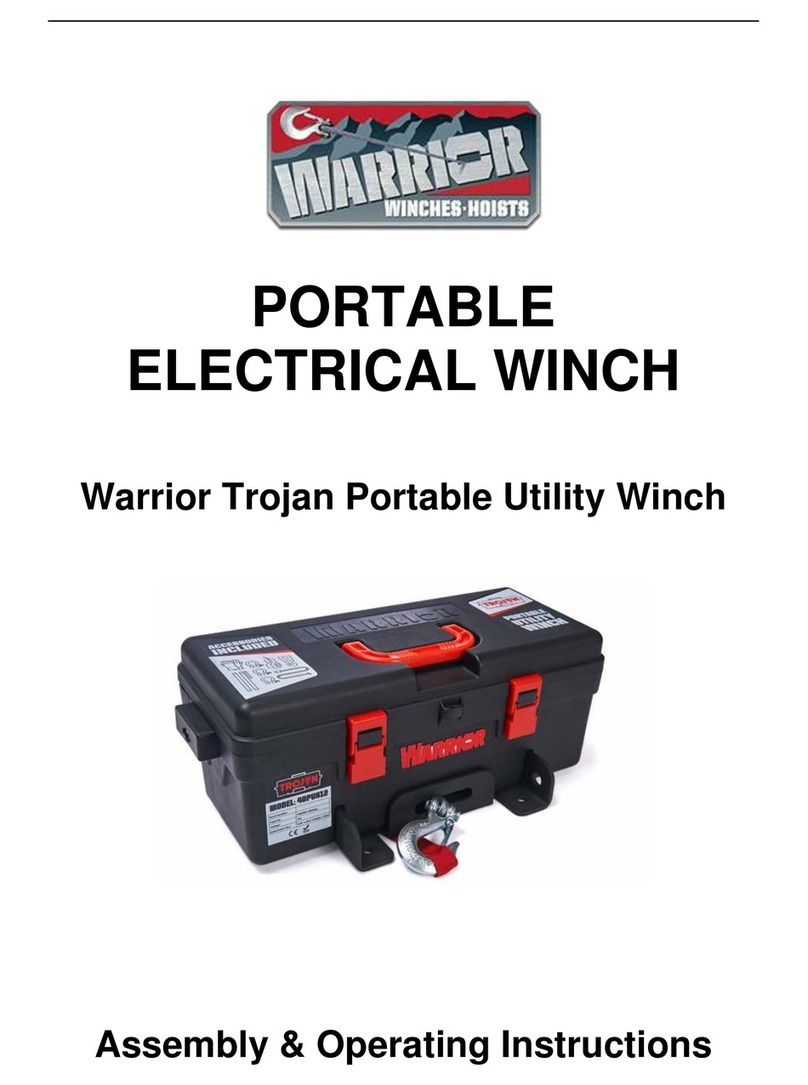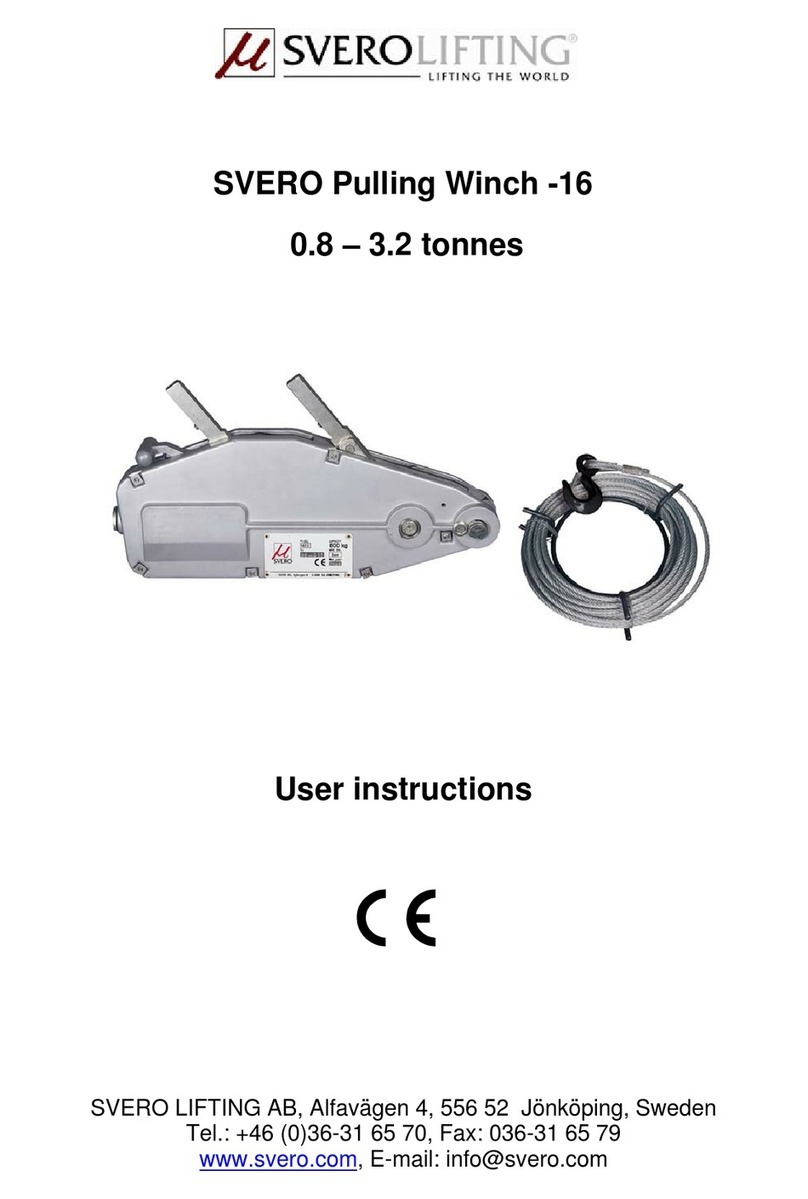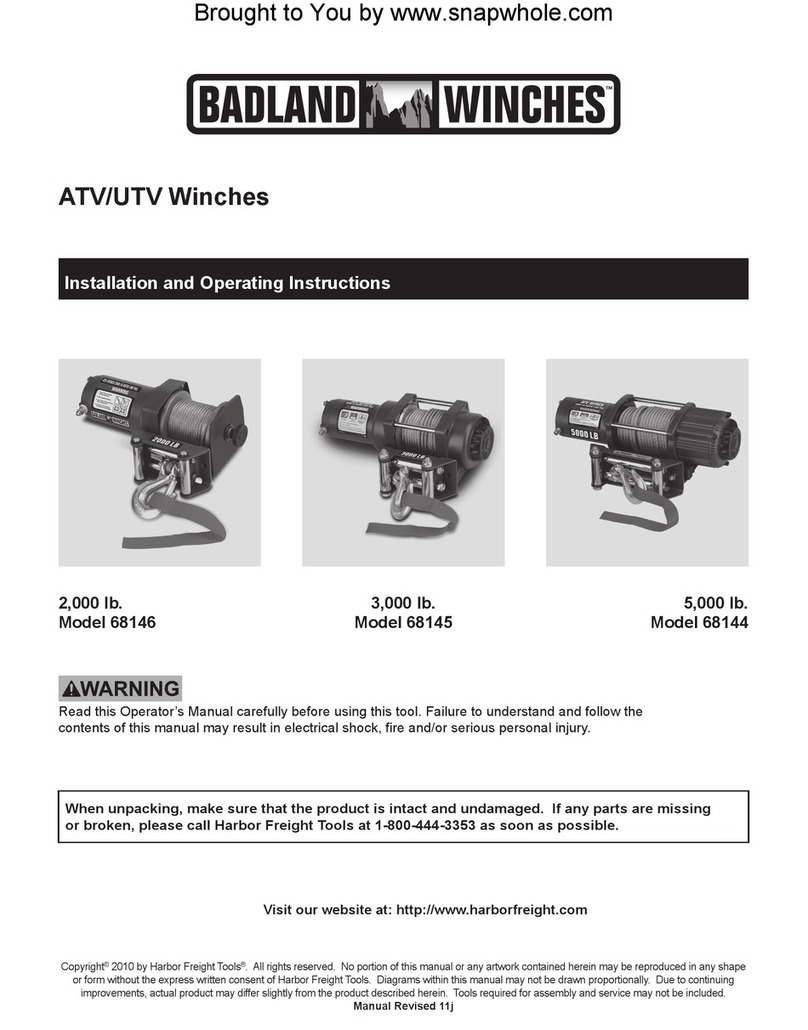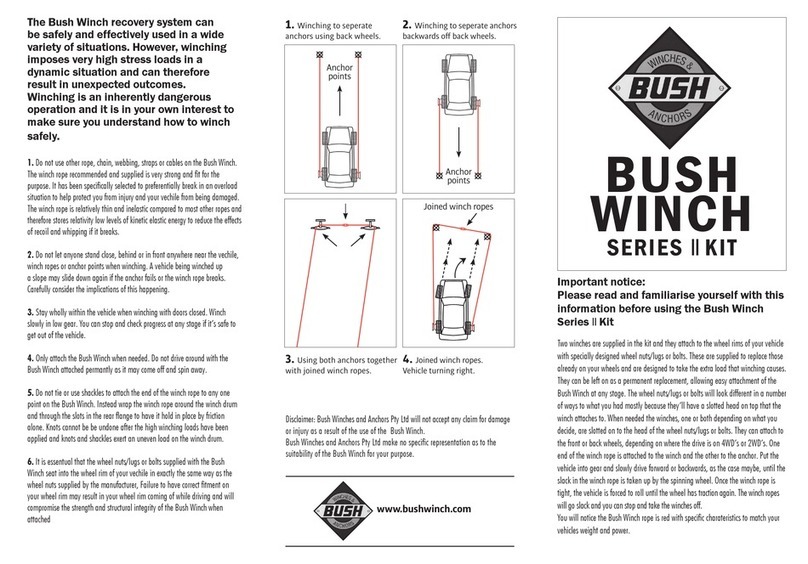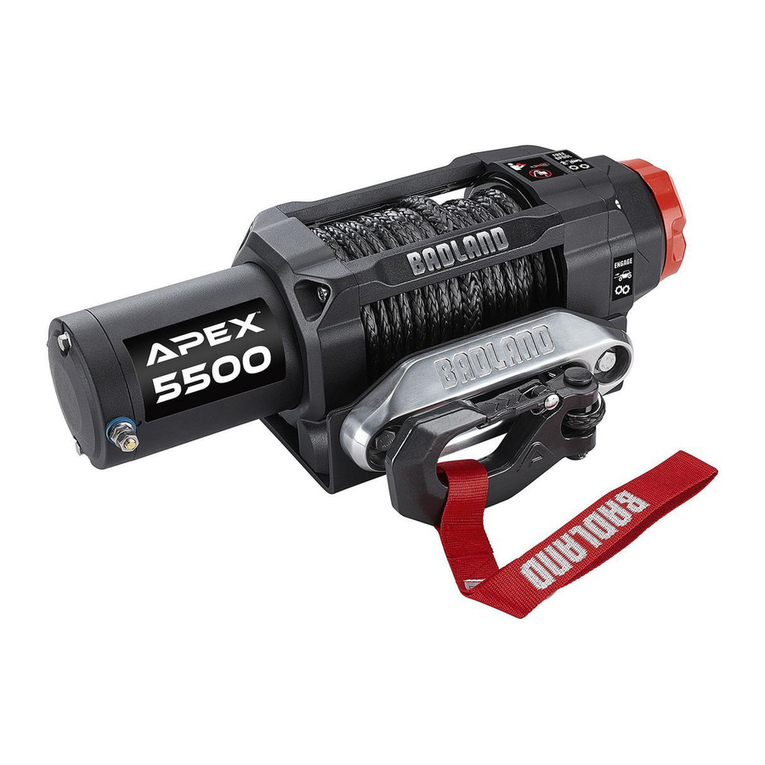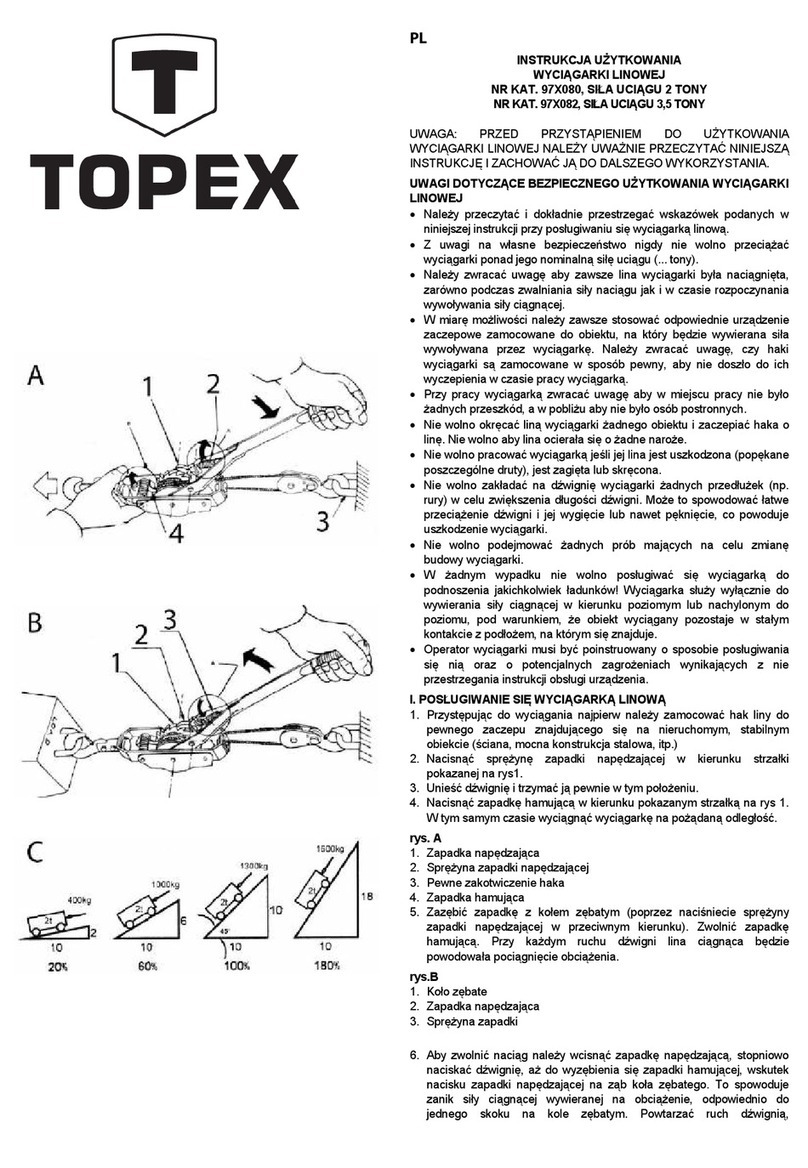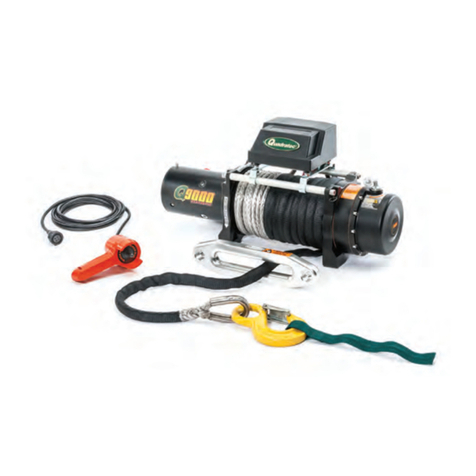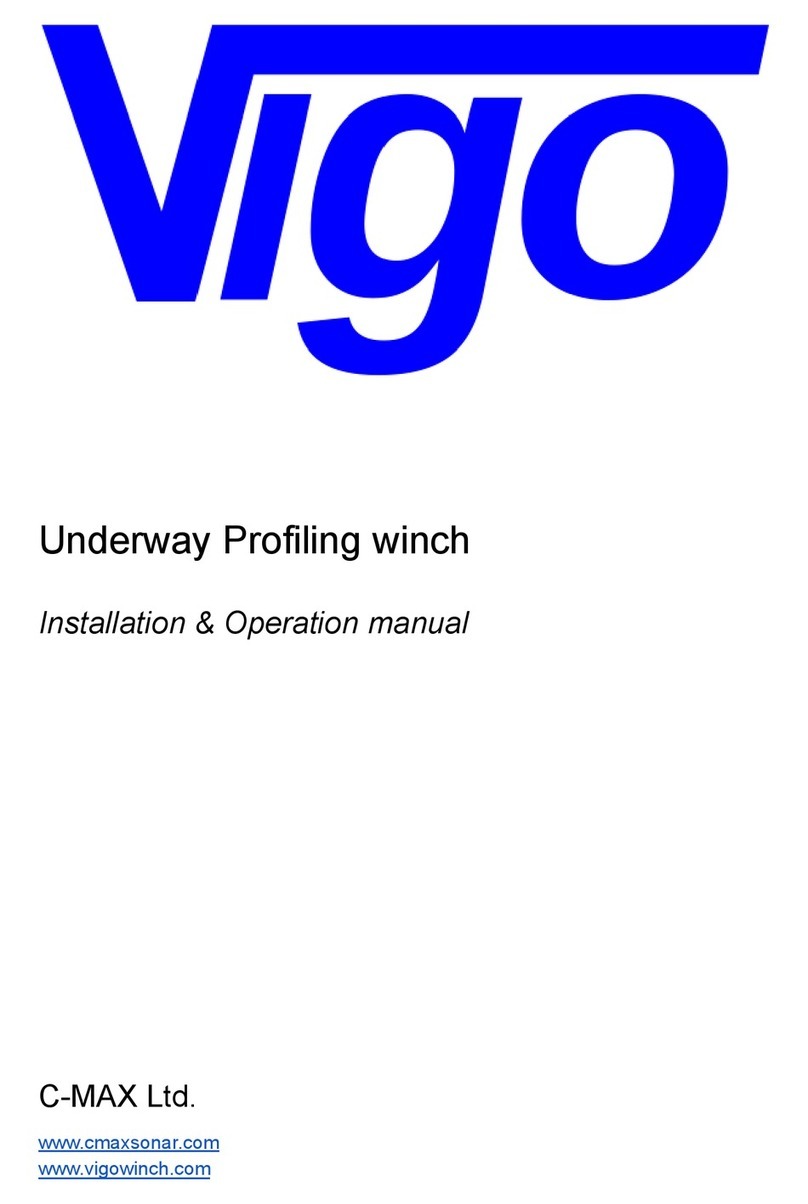
© 2012 by Huchez Treuils S.A.S.
Translation of the original instructions manual 4EN Reproduction prohibited
•Only the people designated by the company are authorised to operate the winch
•Before using the winch for the first time, familiarise yourself with its conditions of use. To this end, read the
present instruction manual carefully and in its entirety and perform all the operations described herein one after
the other.
•Inform your departmental manager or the safety officer of any malfunction so that the fault can be repaired
immediately.
•Respect the directives of the industrial accident prevention organisations such as, in France, the Caisse Régionale
d’Assurance Retraite et de la Santé au Travail (C.A.R.S.A.T.) and the Health and Safety Committee (HSC) of your
company, if one exists.
•Scrupulously respect all information in the sections concerning the CONDITIONS OF USE (section §1) and the WORK
ROPE (section §8.5.4).
•The operator(s) must have an unimpeded view of the load.
•Please ensure that the operator is qualified to operate the machine in the conditions provided for in this manual.
This will ensure the safety of both people and the environment.
•Do not lift or transport loads when there are personnel inside the danger zone.
•Do not authorise the personnel to walk under a suspended load.
•Do not leave a load suspended or with the rope taut unsupervised.
In addition to the above instructions, we must warn you against all incorrect use or handling listed below. It is
dangerous and prohibited to:
unwind the drum completely (keep 2 to 3 residual windings).
pull at an angle.
swing the load.
use ropes of a different diameter and texture to those specified in this instruction manual (FEM 1 Am – ISO M4
for 250 and 750 kg, FEM 1 Bm – ISO M3 for500 and 990 kg).
use damaged ropes or ropes with splices.
grab or touch a moving rope or a rotating drum.
use hooks without a latch, which do not correspond to the loads indicated on the winch or which are in poor
condition.
insert objects into moving parts.
work on loaded winches or when the rope is taut.
use the winch rope as a towing chain.
drum on the control box (overheating of the motor and electrical equipment).
Place hands or clothes, etc. in contact with moving parts, in particular the areas where the rope is wound in/out.
3 – Warranty
Our electric winches are guaranteed for 2 years from the date of shipment (ex-works).
The seller undertakes to repair any operating fault resulting from a fault in the design, execution, components or
materials themselves.
The warranty does not cover wear and tear or damage resulting from a lack of regular or periodic maintenance. It does
not cover damage resulting from a lack of supervision, incorrect handling or an incorrect use of the machines, in
particular overloading, pulling at an angle, under or overvoltage or incorrect connection.
The warranty does not apply to any disassembly, modification or replacement of mechanical or electrical parts
undertaken without our agreement or by a non-approved operator. The warranty only applies to the manufacturer's
original spare parts. During the warranty period, the seller must replace or repair any parts recognised as faulty after
inspection by the qualified and approved department, all free of charge.
The warranty excludes all other services or compensation.
Repairs undertaken within the scope of the warranty are, in principle, performed in the seller's workshops or the
workshop of a representative approved by the manufacturer. When work is carried out on the equipment outside of
their workshops, the seller must cover the labour costs related to the disassembly or reassembly of these parts if these
operations are performed exclusively by their personnel or a representative approved by the manufacturer. The parts
replaced become the property of the seller and must be returned to them at their own expense.
In the case of components with a particular relative importance not manufactured by the seller themselves and which
bear the brand of a specialist manufacturer, the warranty, which may vary according to the manufacturer, is the same
as that agreed by this manufacturer.
